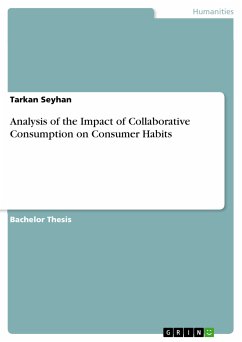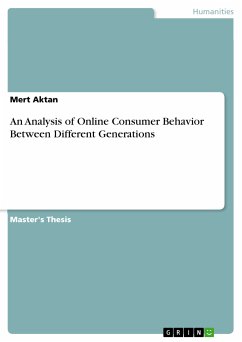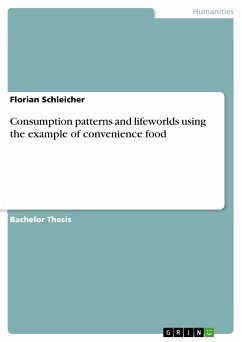
Analysis of the Impact of Collaborative Consumption on Consumer Habits (eBook, PDF)

PAYBACK Punkte
0 °P sammeln!
Bachelor Thesis from the year 2020 in the subject Sociology - Consumption and Advertising, grade: 2.3, FOM Duisburg, language: English, abstract: The objective of this paper is to establish a theoretical groundwork in order to understand the concept behind Collaborative Consumption, which will be followed by an empirical study with the aim to gain insights on the impact of the same on consumer habits. Defining the phenomenon and its main characteristics, followed by an outline of the current situation and relevant markets is essential in order to understand the concept behind. Additionally, dr...
Bachelor Thesis from the year 2020 in the subject Sociology - Consumption and Advertising, grade: 2.3, FOM Duisburg, language: English, abstract: The objective of this paper is to establish a theoretical groundwork in order to understand the concept behind Collaborative Consumption, which will be followed by an empirical study with the aim to gain insights on the impact of the same on consumer habits. Defining the phenomenon and its main characteristics, followed by an outline of the current situation and relevant markets is essential in order to understand the concept behind. Additionally, drivers and motivational factors will be investigated, which form a substantial part for the final discussion. Furthermore, a field study will be conducted, with the aim to collect data about consumption patterns and personal assessments regarding the approach. Moreover, the field study will concentrate on personal characteristics and beliefs. Consequently, data analysis will follow, aiming to give insights on the current state of Collaborative Consumption in terms of its adoption, particularly distinguishing between different industries, to understand the preferences of consumers. This information will eventually be put into relation with the above-mentioned consumption patterns and attitudes in order to be able to make statements about the consumer groups, their motivation and the strengths and weaknesses of the approach. Sociodemographic information will support to determine features of the consumer group and assist to underpin the statements about motives and inducements. Conclusively, the aim is to establish a connection between the findings of the theoretical part and the results of the quantitative analysis to make a final assessment of the topic, ultimately relating to the impact of Collaborative Consumption on consumer habits.
Dieser Download kann aus rechtlichen Gründen nur mit Rechnungsadresse in A, B, BG, CY, CZ, D, DK, EW, E, FIN, F, GR, HR, H, IRL, I, LT, L, LR, M, NL, PL, P, R, S, SLO, SK ausgeliefert werden.













